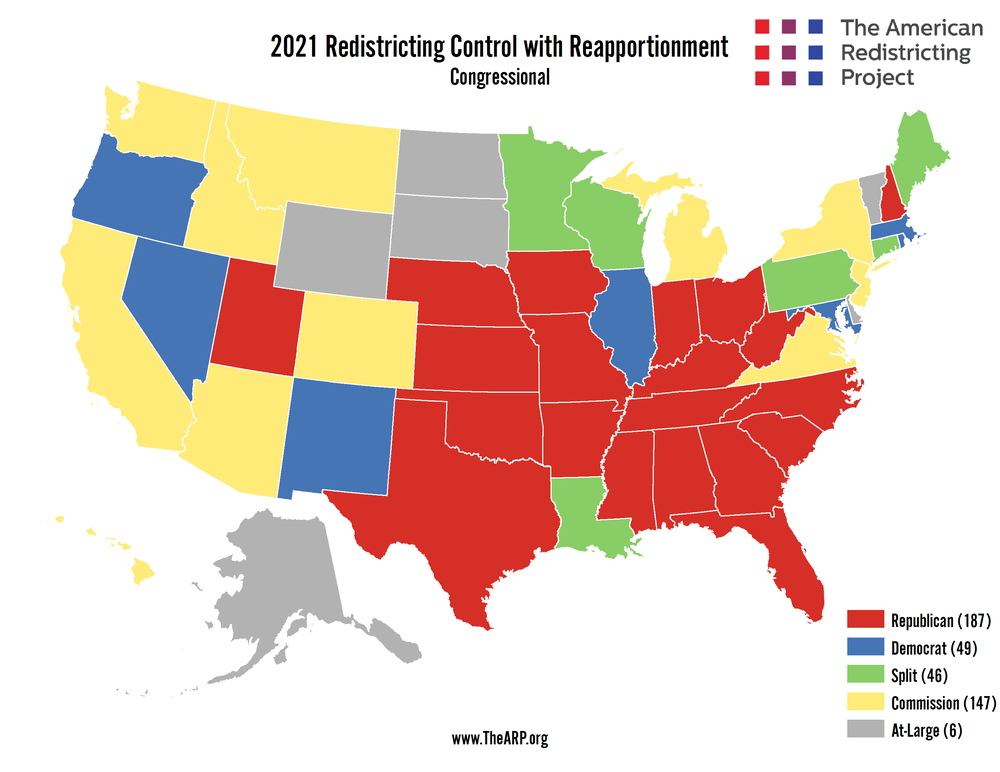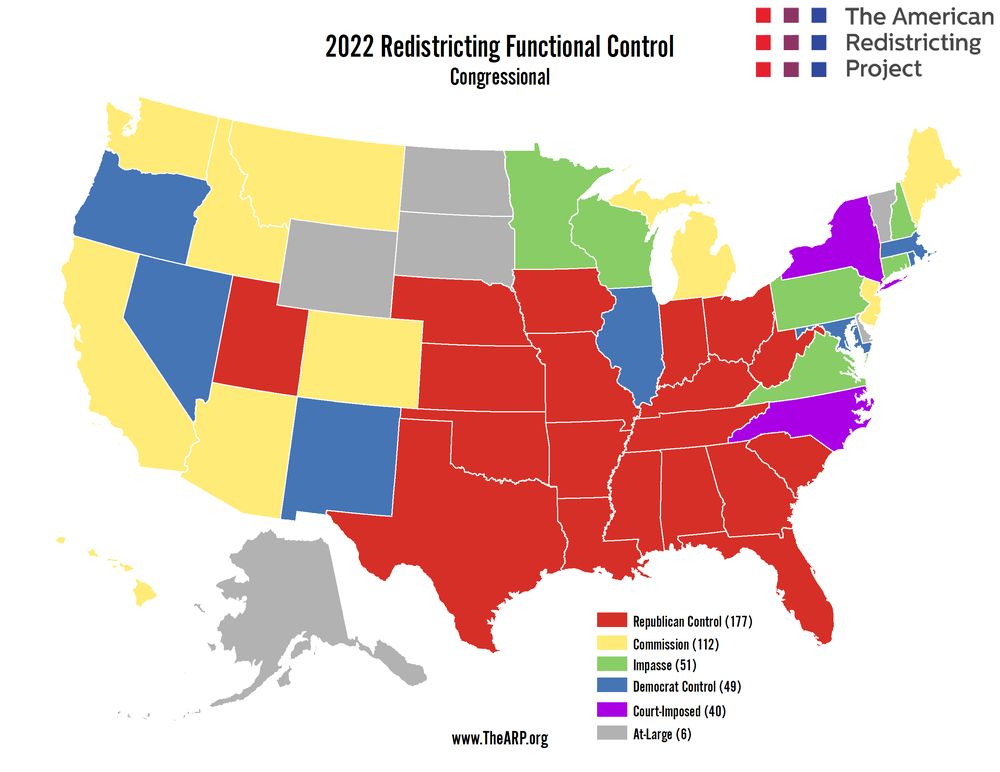Expectations
At the beginning of the 2020 redistricting cycle, we published a blog post detailing who controlled the redistricting process in each state. But the realities of the cycle had other plans as intra-state politics and legal battles upended many of these mapping expectations. Now, with the cycle at its end, we will reexamine several states where redistricting control functionally changed and explain why they occurred and how they impacted their final redistricting plans.
The map below shows expectations at the outset. Republicans controlled 20 states with a total of 187 congressional seats and Democrats controlled 7 states with a total of 49 congressional seats. 6 states with 46 congressional seats were under split-control, meaning no party had sole control over the state's government, while commissions controlled 11 states with 147 congressional seats. The remaining 6 states were at-large with only one congressional district each.

Changes
Louisiana: Split to Republican
With a Democratic governor and a Republican-controlled legislature, Louisiana was expected to be a split-control state. The legislature passed their congressional plan, H.B. 1/S.B. 5, on February 21, 2022, but Governor John Edwards vetoed it on March 10. That same day, however, the legislature overrode the governor’s veto of the congressional map, functionally making Louisiana a Republican-controlled state.
Maine: Split to Commission
Maine was expected to be a split-control state because congressional maps are enacted by the legislature with the aid of a 15-member advisory commission wherein both parties had a meaningful role in the process. As the process commenced, the commission took a collaborative approach and submitted a compromise plan to the legislature which accepted it without amendments, functionally changing Maine to a commission-controlled state.
New Hampshire: Republican to Impasse
New Hampshire was originally expected to be a Republican-controlled state with a Republican Governor and Republican-controlled legislature. However, Governor Sununu and the state's legislature failed to reach an agreement and after two of the legislature’s plans were vetoed, the New Hampshire Supreme Court adopted the court-appointed special master’s plan on May 31, 2022. It is therefore most fitting to categorize New Hampshire as an impasse state.
New York: Commission to Court-Imposed
New York was expected to be a commission-controlled state because the state’s redistricting commission has primary authority in congressional redistricting. After the commission failed to adopt a plan and the legislature’s enacted plan was struck down by the New York Court of Appeals, the New York Supreme Court adopted the court-appointed special master’s redistricting plan on May 21, 2022. New York was therefore a court-imposed state.
North Carolina: Republican to Court-Imposed
North Carolina was expected to be a Republican-controlled state because it had a Republican legislature and the state’s governor has no role in the redistricting process. A state court struck down the legislature’s map and adopted the court-appointed special master's redistricting map on February 23, 2022, thereby making it a court-imposed state.
Virginia: Commission to Impasse
Virginia was expected to be a commission state due to the newly passed ballot measure. However, after the commission failed to agree on a map prior to the constitutional deadline, the impasse led to a special master-drawn map being adopted by the Virginia Supreme Court on December 28, 2021.
Final Overview
The map above shows the redistricting control landscape as it stands today. The final count has 19 states with 177 congressional seats controlled by Republicans, 7 states with 49 congressional seats controlled by Democrats, and 10 states with 112 congressional seats controlled by redistricting commissions. 6 states with 51 congressional seats had impasses, and 2 states with 40 congressional seats had court-imposed redistricting plans. The final 6 states remained at-large.

